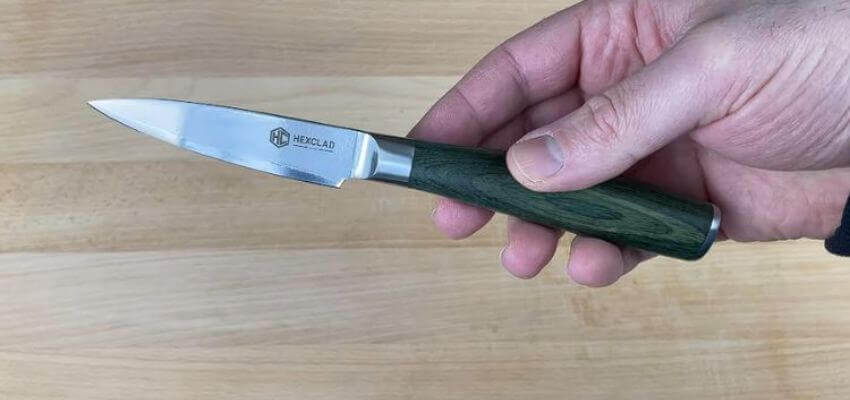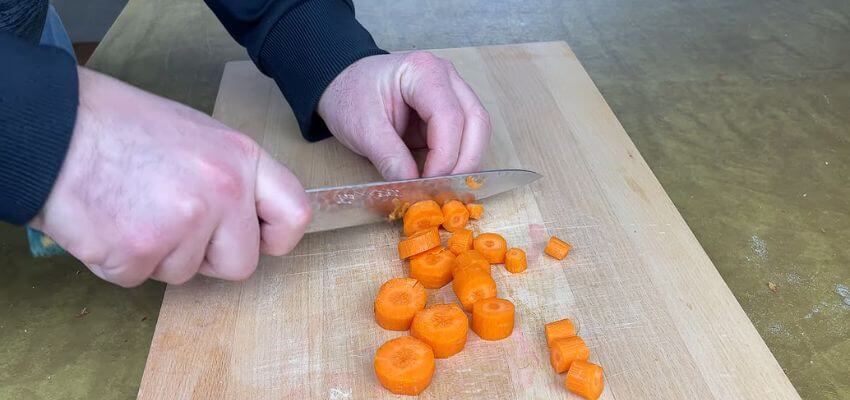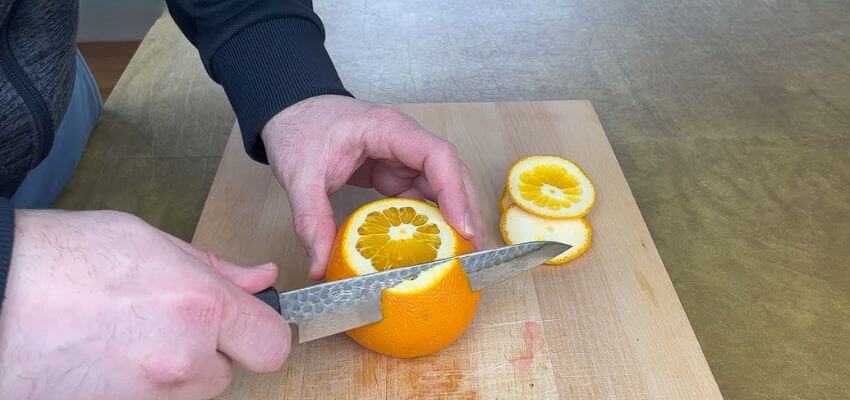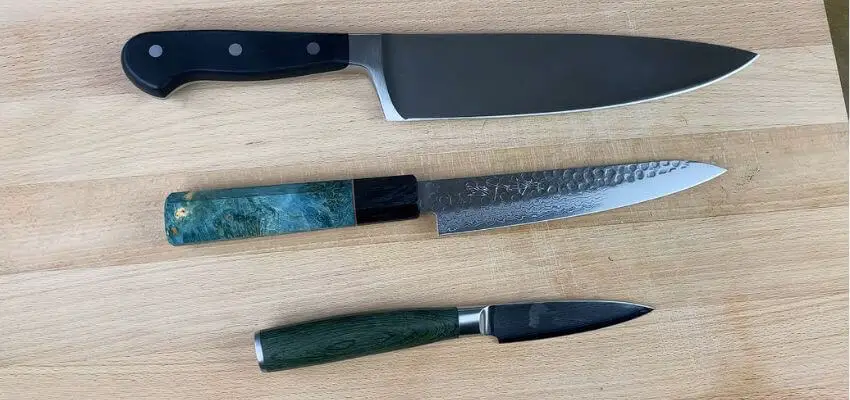If you’ve ever stood in your kitchen, staring at a collection of knives and wondering which one to use, you’re not alone. Among all the specialized kitchen knives, the utility knife often stands out as the unsung hero. But what exactly is a utility knife used for in the kitchen, and why should it earn a spot in your daily cooking routine? Let’s dive in and explore the versatile, multi-tasking marvel that is the utility knife.
Understanding the Basics of a Utility Knife
Before we start listing all the amazing ways you can use a utility knife, let’s see what it actually is. A utility knife is sized between a chef’s knife and a paring knife, striking a balance in terms of length and versatility.
Typically, its blade ranges from 4 to 7 inches in length, giving it the perfect balance between precision and power. Think of it as the Swiss Army knife of the kitchen—compact, versatile, and ready for almost anything.
How is a Utility Knife Different From Other Knives?

At first glance, the utility knife may not seem all that different from other knives in your drawer, but there are a few key characteristics that set it apart:
- Size: Bigger than a paring knife, but smaller than a chef’s knife, the utility knife’s size makes it ideal for tasks that require more control than a large knife but more strength than a small one can offer.
- Blade Shape: While most utility knives have straight blades, some come with a serrated edge. The serrated option adds even more versatility, allowing you to slice through tougher textures like bread or tomatoes without squishing them.
- Weight: It’s lightweight, offering more precision without tiring out your hand, making it great for those quick in-between jobs.
What is a Utility Knife Used for in the Kitchen?

So, what is a utility knife actually used for in the kitchen? The answer is almost anything! Let’s break down some common kitchen tasks where the utility knife shines:
Chopping Fruits and Vegetables
Whether you’re slicing apples for a snack or dicing carrots for a stew, the utility knife can handle fruits and vegetables of all sizes. It’s sharp enough to glide through delicate skins like tomatoes, yet sturdy enough to slice through denser produce like potatoes. Ever try cutting an orange with a chef’s knife and feel like it’s overkill? That’s where the utility knife steps in.
Trimming Meat
While a chef’s knife is typically the go-to for cutting large slabs of meat, a utility knife is perfect for trimming excess fat or working on smaller cuts. Its precision allows you to navigate around bones or remove sinew without tearing apart the meat.
Slicing Bread
If you don’t have a designated bread knife, a serrated utility knife can be the next best thing. It’s particularly good for slicing small loaves or rolls, giving you clean cuts without the crumbling mess.
Peeling and Paring
Need to peel an apple or remove the seeds from a bell pepper? While a paring knife might seem like the logical choice, a utility knife’s slightly longer blade can give you more reach and control for these detailed tasks.

Why Every Home Cook Should Own a Utility Knife
You might be asking, “Why not just use my chef’s knife or paring knife?” That’s a fair question. But once you’ve used a utility knife, you’ll realize it fills a unique niche in your kitchen. It’s like having a tool that sits right in the middle, where too much knife would be cumbersome, but too little would be ineffective.
Think of the utility knife as the middle child of your knife set—reliable, adaptable, and often overlooked. When you don’t want the heft of a chef’s knife, and the paring knife feels inadequate, the utility knife becomes your go-to.
Choosing the Right Utility Knife for Your Kitchen

Like any other kitchen tool, not all utility knives are created equal. Here are a few things to consider when choosing the best utility knife for your cooking needs:
- Blade Material: Stainless steel is a popular choice for utility knives because it’s durable, resists rust, and stays sharp for longer. High-carbon steel, while prone to rust, offers sharper blades if you’re willing to maintain it properly.
- Handle Design: Comfort is key when you’re using a knife regularly. Look for ergonomic handles that provide a good grip, reducing strain during repetitive tasks.
- Blade Style: As mentioned earlier, you can find both straight and serrated utility knives. Straight blades are perfect for clean slicing, while serrated blades give you an edge (pun intended) on tougher textures.
How to Care for Your Utility Knife
Your utility knife, just like any other kitchen tool, needs regular care to ensure it lasts for years to come. Here are a few simple tips:
- Keep it Sharp: Regular sharpening will keep your utility knife performing at its best. Whether you use a sharpening stone or a professional service, don’t let the blade dull over time.
- Hand Wash Only: Even though many knives are advertised as dishwasher-safe, hand washing your utility knife will prevent the blade from dulling and the handle from warping.
- Store Properly: Store your utility knife in a knife block, magnetic strip, or protective cover. Avoid tossing it into a drawer where the blade can get nicked or damaged.
Common Misconceptions About Utility Knives
You might have ignored the utility knife, thinking it’s not necessary or just another extra tool. Let’s clear up some common misunderstandings:
“I only need a chef’s knife.”
A chef’s knife is important, but it’s not perfect for every job. Utility knives are much better for smaller tasks, offering more control and precision.
“Utility knives aren’t durable.”
Actually, a good utility knife can last a long time, especially when made from strong materials and if you take proper care of it.
“It’s just for beginners.”
This isn’t true either. Even professional chefs use utility knives! They are versatile and handy for both home cooks and experts in fancy restaurants.
Conclusion
The utility knife may not be the star of your kitchen, but it’s certainly the backbone of many day-to-day tasks. From slicing fruits and veggies to trimming meats and peeling produce, this multi-purpose tool earns its place in your drawer. If you’ve ever struggled with the wrong knife for the wrong job, a utility knife might just be your new best friend in the kitchen.
FAQs
Can a utility knife replace a chef’s knife?
While a utility knife is versatile, it’s not meant to completely replace a chef’s knife. It’s great for smaller or more detailed tasks, but for larger jobs like cutting big vegetables or chopping large cuts of meat, a chef’s knife is still the best tool.
How often should I sharpen my utility knife?
It depends on how often you use it, but generally, you should sharpen your utility knife every few months if you use it regularly. Regular honing in between sharpening can help keep the edge sharp.
What’s the best way to store my utility knife?
The best way to store any knife, including your utility knife, is in a knife block, on a magnetic strip, or in a protective sheath. Avoid leaving it loose in a drawer where it can get damaged.
Is a utility knife good for cutting meat?
Yes, a utility knife is great for trimming meat and cutting smaller portions of meat like chicken breasts or steaks. However, for larger cuts or tougher jobs, a larger knife like a chef’s knife or a butcher’s knife is better suited.
What’s the difference between a serrated utility knife and a straight-edge utility knife?
A serrated utility knife is better for cutting through foods with tougher exteriors but softer interiors, like tomatoes or bread. A straight-edge utility knife is better for tasks that require precision and smooth cuts, like slicing fruits or trimming meat.
Related Post
imarku vs Henckels: Which Knife Brands Knife Are Best?
Nakiri vs Usuba Knives: Which one besyt for you?
Butter Knife VS Dinner Knife: Choose the perfect Knife for you